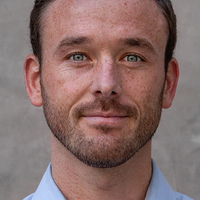Art Bamford
University of Colorado, Boulder, Media Studies, Graduate Student
The cry of every parent and church leader in this generation is "How do I help create media-safe homes?" Right Click is a wonderful resource that gives practical answers to the most-often asked questions about how to handle... more
The cry of every parent and church leader in this generation is "How do I help create media-safe homes?" Right Click is a wonderful resource that gives practical answers to the most-often asked questions about how to handle social media. This is my go-to book for parents.--Dr. Jim Burns, President, HomeWord, author of Confident Parenting Feel like your kids are drowning in a sea of new questions, apps, and devices?Want to talk about digital media more with our kids, but aren't sure how?Help is here.Right Click helps you think and talk differently about digital media, as you learn from inspiring and creative parents like you who navigate these ever-changing waters day after day.Drawing from the best research on media and youth, as well as our own conversations with parents and teenagers, Right Click offers new breakthroughs for your most pressing tech-related dilemmas.* How to teach your kids to use social media responsibly.* How to set limits on when, where, and how mu...
Research Interests:
This thesis explores changes that occurred in popular music during the 1960s and early 1970s through case studies involving three significant albums released in 1971 and 1972: Marvin Gaye’s What’s Going On, Sly and the Family Stone’s... more
This thesis explores changes that occurred in popular music during the 1960s and early 1970s through case studies involving three significant albums released in 1971 and 1972: Marvin Gaye’s What’s Going On, Sly and the Family Stone’s There’s a Riot Goin’ On, and Stevie Wonder’s Talking Book. These albums deserve attention particularly because, as this thesis argues, existing research on the cultural significance of popular music has focused largely on the periods before or after the 1970s and research on music-making technologies has focused largely on white artists or groups from the late 1960s. Addressing this blind spot, the thesis seeks to illuminate this time period and its place as a significant bridge to the digital era that followed. Moreover, by employing media ecology and practice theory as a framework, the thesis argues that these albums exemplify a cleavage of the recorded musical text from live performance, akin to that of the written text from oral-styled manuscripts to closed literary works. Drawing upon the tradition of the history and phenomenology of recorded sound, this thesis therefore aims to contribute to media ecological understandings of how human agency, industry structures, and technological affordances worked together to redefine the structures and the relationships with which they were associated.
